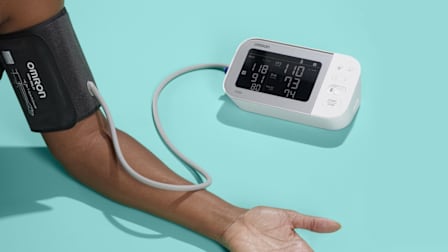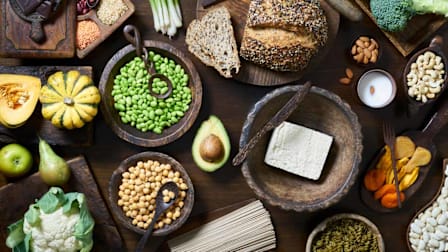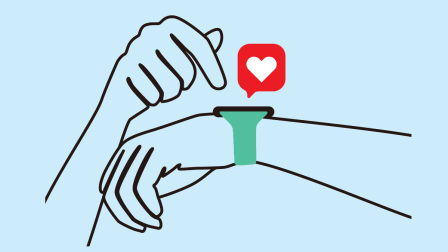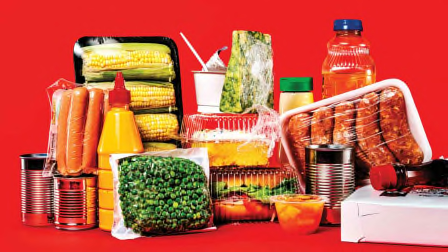5 Food Moves for Lower Blood Pressure
These strategies may reduce the need for meds if you have hypertension, or even prevent it in the first place
Advanced age is a risk factor for high blood pressure—more than half of older adults have it. But there is plenty you can do to reduce your odds and reverse worrisome increases.
Where to start? With the foods you eat. “Diet can help for both prevention and management of high blood pressure,” says Emily Gier, RD, an associate professor in Cornell University College of Human Ecology’s division of nutritional sciences in Ithaca, N.Y. “And it doesn’t come with the side effects that some medications do.”
Load Up on Potassium
Not getting enough potassium could be as problematic for blood pressure as eating too much sodium. “A lot of studies show that when you increase potassium, your kidneys are better able to excrete sodium, so by eating more potassium you can get rid of some of that sodium in your diet,” says Swapnil Hiremath, MD, an associate professor in the faculty of medicine at the University of Ottawa in Canada.
Potassium also helps blood vessels relax, which increases blood flow and lowers blood pressure. A 2013 review of research published in The BMJ, with almost 129,000 participants, found that people with hypertension who get 3,500 mg to 4,700 mg of potassium (the Daily Value) a day slashed systolic blood pressure by 5.32 points and diastolic blood pressure by 3.1 points.
Eating a diet rich in vegetables, whole grains, beans, peas and lentils, fruits, and nuts is an easy way keep your potassium intake up. Potatoes (895 mg per one small, baked, without skin), lentils (731 mg per cooked cup), butternut squash (582 mg per 1 cup cooked cubes), prunes (556 mg in 10 prunes), and bananas (411 mg in one medium) are all good sources of potassium.
Drink Less Alcohol
The days of alcohol being viewed as cardio-protective are gone. A position paper from the International Society of Hypertension, published in the Journal of Hypertension in 2023, recommends avoiding binge drinking (4 to 5 drinks in one occasion) and ideally abstaining from alcohol. “People don’t talk about it, but there is a strong relationship with increasing alcohol and increasing blood pressure,” Hiremath says. “Studies have shown that people who drink the most benefit the most in terms of blood pressure reduction when they cut back on alcohol.”
According to the position paper, while the upper limit for alcohol is one drink a day (12 ounces of beer, 5 ounces of wine, or a shot of liquor) for women and two for men, “there is no safe limit for alcohol consumption to prevent hypertension and adverse cardiovascular outcomes,” Hiremath says.
Boost Fiber
Whole grains, fruits, vegetables, nuts, seeds, and beans all contain fiber, a type of carbohydrate that the body can’t fully break down or absorb. Fiber has been linked to better cardiovascular health overall. For example, a review of 243 studies published in 2019 in The Lancet found that people who ate 25 to 29 grams of fiber daily (the Daily Value is 28 grams) had a 15 to 30 percent lower risk of dying from heart disease or stroke than those who consumed less than 15 grams. Higher intakes may be even more beneficial, according to the researchers.
Looking at high blood pressure in particular, a review of 15 studies, published in 2022 in BMC Medicine, found that each 5-gram-per-day increment in fiber reduced both systolic and diastolic levels by about 2 points. Fiber superstars include black beans (18 grams per cup, canned) and other beans, avocado (9 grams in one medium), bulgur (9 grams per cup), raspberries (8 grams per cup), pears (5.5 grams in one medium), and oatmeal (4 grams per cup).
Eat Less Sugar
Added sugars, the kind incorporated during the manufacturing process, are linked with a greater risk of high blood pressure, as well as weight gain, insulin resistance, and high cholesterol, according to the International Society of Hypertension. In a 2019 study in the journal Nutrients, researchers estimated that reducing daily sugar intake from about 9 teaspoons (36 grams) to just under 7 teaspoons (28 grams) would lower systolic blood pressure by 8.4 points and diastolic blood pressure by 3.7 points in older women.
The American Heart Association recommends no more than 25 to 36 grams a day for women and men, respectively. Sugar-sweetened beverages, such as sodas and many tea and coffee drinks, are some of the biggest sources of added sugar, and some research suggests that drinks with added sugars have more of a negative effect on blood pressure than sugary foods, even at one drink per day.
Watch Your Calories
Implementing all the dietary changes above will help naturally increase healthy nutrients in your diet while decreasing empty calories, saturated fat, and sodium. That can lead to weight loss. “Even dropping 5 to 10 pounds for someone who needs to lose weight can have an impact,” Gier says. Research shows 2- to 11-point reductions in systolic measurements and up to 9 points for diastolic for weight loss combined with a healthy diet.
Editor’s Note: This article also appeared in the February 2024 issue of Consumer Reports On Health.

















